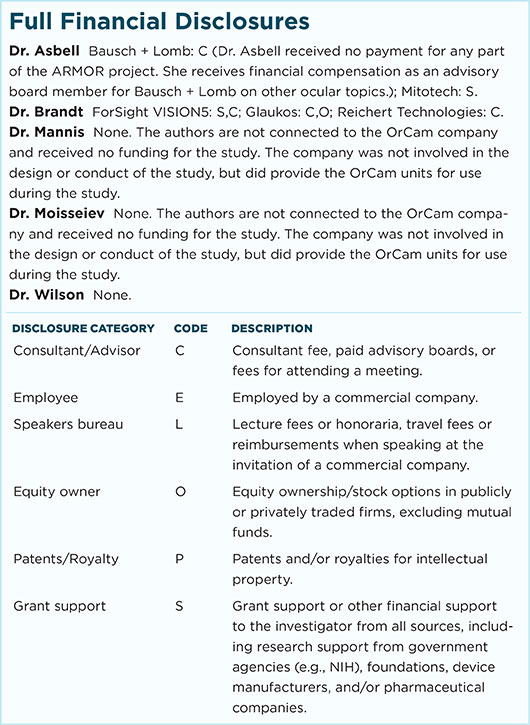Download PDF
Researchers at University of California, Davis, Eye Center report that legally blind patients were able to read newspapers, books, and menus, and recognize products and signs with the help of an artificial vision device that is as portable as a pair of spectacles.1
The system, called OrCam, consists of a miniature camera and a bone conduction earpiece that are mounted to the side of almost any spectacle frame and connected by a thin wire to a pocket-sized battery and computer. By pointing a finger or pushing a button, the wearer indicates the text or item of interest, which the device reads to the patient through the earpiece. It can be programmed to recognize faces, products, and paper money.
Developed in Israel, the device is available in the United States and Canada. Currently, it works only in English.
 |
ORCAM IN USE. Patient points to text of interest, and the device reads it into the earpiece.
|
Tested on daily tasks. In this pilot study, the 12 participants were asked to perform tasks from a list of 10 items that simulate daily visual activities. These included reading emails on electronic devices, newspaper headlines or articles, menus, or signs, as well as identifying money or products. At baseline, the mean task score (1 point per task completed) was 2.5 with patients’ best-corrected vision (20/200 or worse in the better-seeing eye). With the OrCam device, all participants could perform at least 9 of 10 such tasks (mean score, 9.5).
Not like a magnifier or app. “The OrCam is a unique low vision aid that is not a magnifier and is different from smartphone applications or voice-activated devices,” said Elad Moisseiev, MD, a retina fellow at UC Davis.
“If anything, the optical character recognition technology driving OrCam is closer in spirit to a self-driving motor vehicle. It helps users recognize text, objects, and faces, but not by making them more visible,” explained Mark J. Mannis, MD, the ophthalmology department chair at UC Davis. “The users do not actually ‘see’ with it but are able to recognize text and objects of interest that are in front of them, improving their functionality and independence.”
—Miriam Karmel
___________________________
1 Moisseiev E, Mannis MJ. JAMA Ophthalmol. Published online May 5, 2016.
___________________________
Relevant financial disclosures—Drs. Mannis and Moisseiev: None. The OrCam company provided devices for use during the study.
For full disclosures and disclosure key, see below.

More from this month’s News in Review